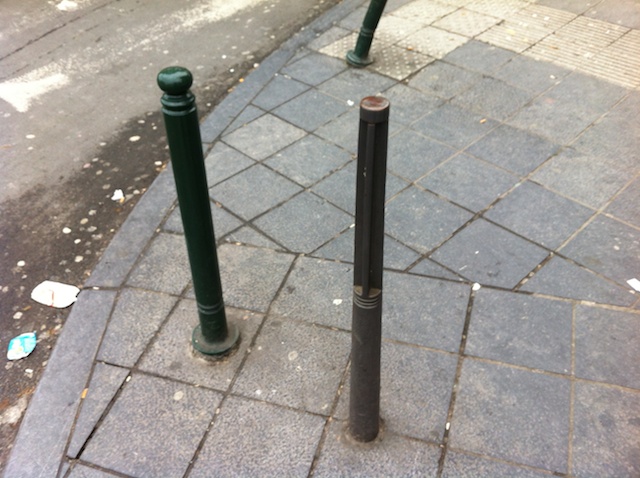
Listening Between a This and a That
28. June – 30. June 2013
What lies beneath conceptions of urban sonority? In what way is sonic awareness reflexive of broader social transformations? The symposium component of Tuned City Brussels explores these questions over the course of three days in three dedicated sessions titled: Relational Noise, Situational Listening and Operative Ambience.
Recent studies in auditory culture forge links between common categories of sonic experience and broader sociohistorical transformations. Thinking through mundane terms such as ’noise‘ (H. Schwartz, Making Noise, 2011), ‚ambience‘ (T. Morton, Ecology Without Nature, 2007), ‚resonance‘ (V. Erlmann, Reason and Resonance, 2010) and ‚vibration‘ (S. Trower, Senses of Vibration, 2012) sound’s own vocabulary displays distinctive contextual dimensions. Not only does this vantage highlight potential biases circulating in the every-day language of hearing but also exposes the pronounced relational character of sonic registers in general. Taut between a this and a that, sound begins to negotiate objects & events, messages & murmurs, self & surroundings or sensation & logic.
Tuned City aims at refracting sound’s newfound awareness through Brussels‘ own relational abundance, in order critically reassess sensory-urban affordances. With a focus on hearing’s emplacement and listening’s affordances, this series explores the ways in which oscillations enact senses of the city.
–
28. June 2013
Relational Noise @ Centre Rosocha map >>>
beginning 10:00h
Relational Noise commences the symposium component at Tuned City Brussels with a series of talks contextualizing the everyday language of sound. In his talk Missing Persons, Hillel Schwartz proposes that attempts at making sense of noise demands a closer scrutiny of what been masked by, or excluded from, noise’s own presence. Shelly Trower explores the historical context of the nineteenth century in which a particular consciousness of vibration was formed with an attention to instances where vibrations retain an in-between status across sensory thresholds. Christoph Cox’s talk exposes an anthropocentric bias in distinctions between ‚hearing‘ and ‚listening‘ and will put forward an alternative approach that extends listening into the inanimate world. Closing this symposium block is a lecture-performance of Mattin in conversation with Kobe Matthys exploring the context of social noise and its political and cultural potentialities.
Missing Persons
by Hillel Schwartz (US)
Poet, translator, case manager, and independent scholar who has published widely on topics in cultural history
Hearing-Things
by Christoph Cox (US)
Author and teacher in the realm of philosophy, art and music
Between Speeds: Sirens, railway shocks, street noises, and more sirens
by Shelley Trower (UK)
Researcher of 19th/20th century literature and culture with a focus on oral history, place and nation
Noise & Gentrification – Stockholm meets Brussels
Mattin (E/BASK) in conversation with Kobe Matthys (BE)
–
29. June 2013
Situational Listening
In the spirit of Guy Debord’s dérive, the second day symposium block Situational Listening picks up the discourse of immediate experience, nested in a dialectics of walking and listening. By fusing with the backdrop of the city, this day’s program blurs distinctions between lecture / performance and venue / public space. The events begin with a contribution by Francesco Careri in which he develops a notion of walking as an autonomous form of art that at once negotiates and interprets as much as it territorializes and intervenes in the city. Following this overview, Joost Fonteyne will focus on the specific genealogy of the sound walk and explores its contemporary implications. At another location in the city, DOC-team develop the theme of walking as a critical practice of every-day life and show how sound experimentation can link such practices of walking with emerging strategies of urban planning. Brandon LaBelle intensifies the relational in sound in order to spill over the confined limits of ’self‘ and ’surroundings‘ into sonic territories that forge collectivity. In his analysis of the ‚acoustics of sharing‘ LaBelle provides a glimpse at possible alternate modalities of ‚being public‘.
Block 1 @ Maison du Peuple map >>>
beginning 11:00h
Walkscapes
by Francesco Careri (IT)
Lecturer at the Department of Architecture of Roma Tre University
The art of sound walks
by Joost Fonteyne (BE)
Curator, organiser of contemporary music concerts and sound art
Block 2 @ Galerie Rivoli map >>>
beginning 15:00h
Sound::Walk
by DOC-team – Szilvia Kovács (HU)& Carina Lesky (A) & Anamarija Batista (BiH)
interdisciplinary research group
Shared Space
by Brandon LaBelle (US)
Artist, writer and theorist
–
30. June 2013
Operative Ambience @ GC De Linde map >>>
beginning 11:00h
The concluding symposium block focuses on various approaches towards an ecology of sound and atmospheres. Gernot Böhme will discuss an understanding of atmosphere in which ephemeral aspects of place are embedded within a complex structuring of acoustic space and whose constituent qualities often exceed measurement principles of the natural sciences. Jean-Paul Thibaud explores the social ecology of the built environment in order to consider urban ambiances as ’sensory lifeforms‘. On the other hand, Timothy Morton’s talk takes the example of earworms as the starting point for an examination of a deeper sonic ecology that redefines relations between sound and its supporting vectors.
Aesthetic of Atmospheres
Gernot Böhme (D)
Headmaster of the Institute for Practice of Philosophy in Darmstadt
Earworm
Timothy Morton (US)
Professor of English literature, lecturer and author
Urban Ambiances as Sensory Lifeforms
Jean-Paul Thibaud (F)
Sociologist, urban planner and senior researcher at CNRS